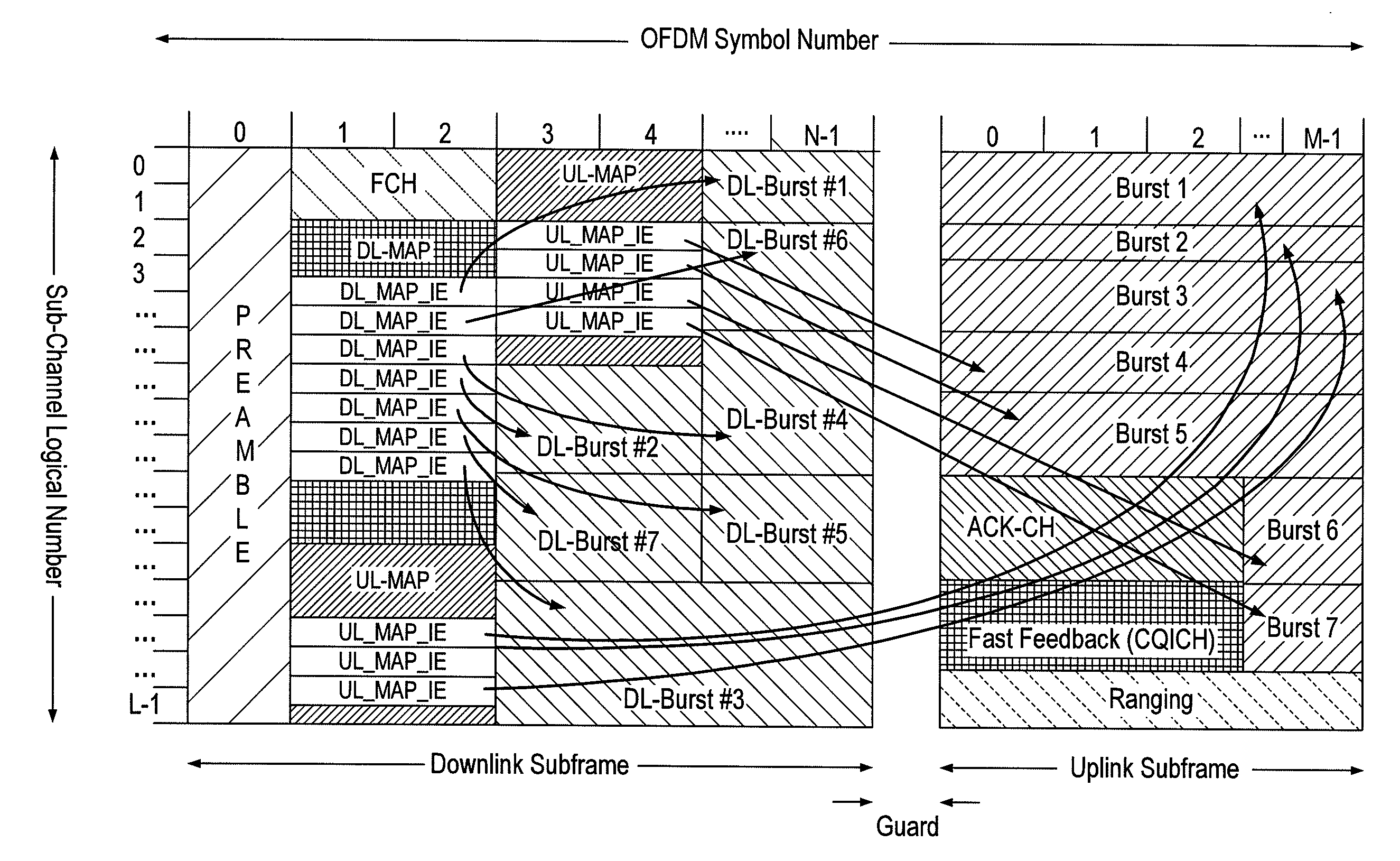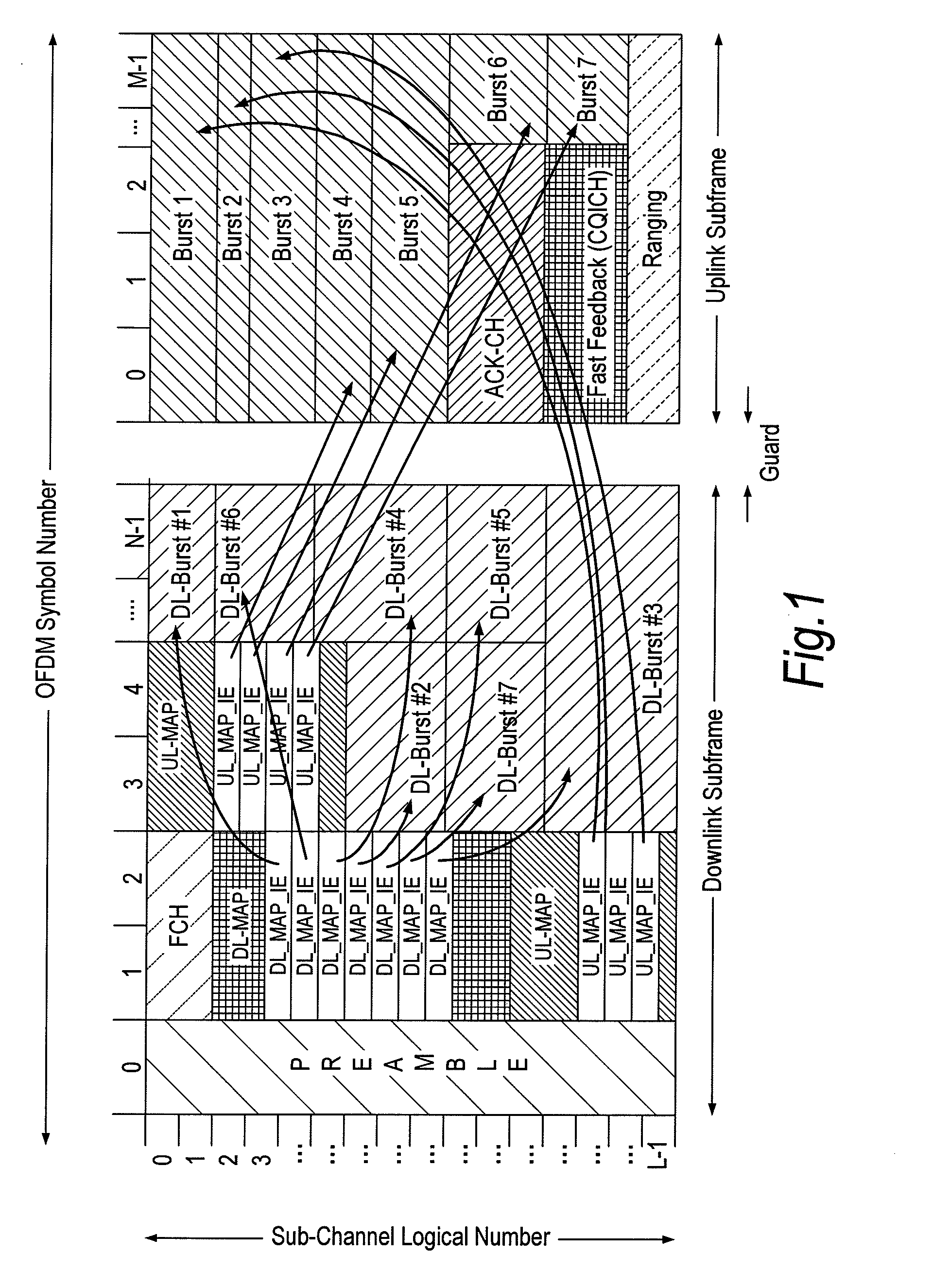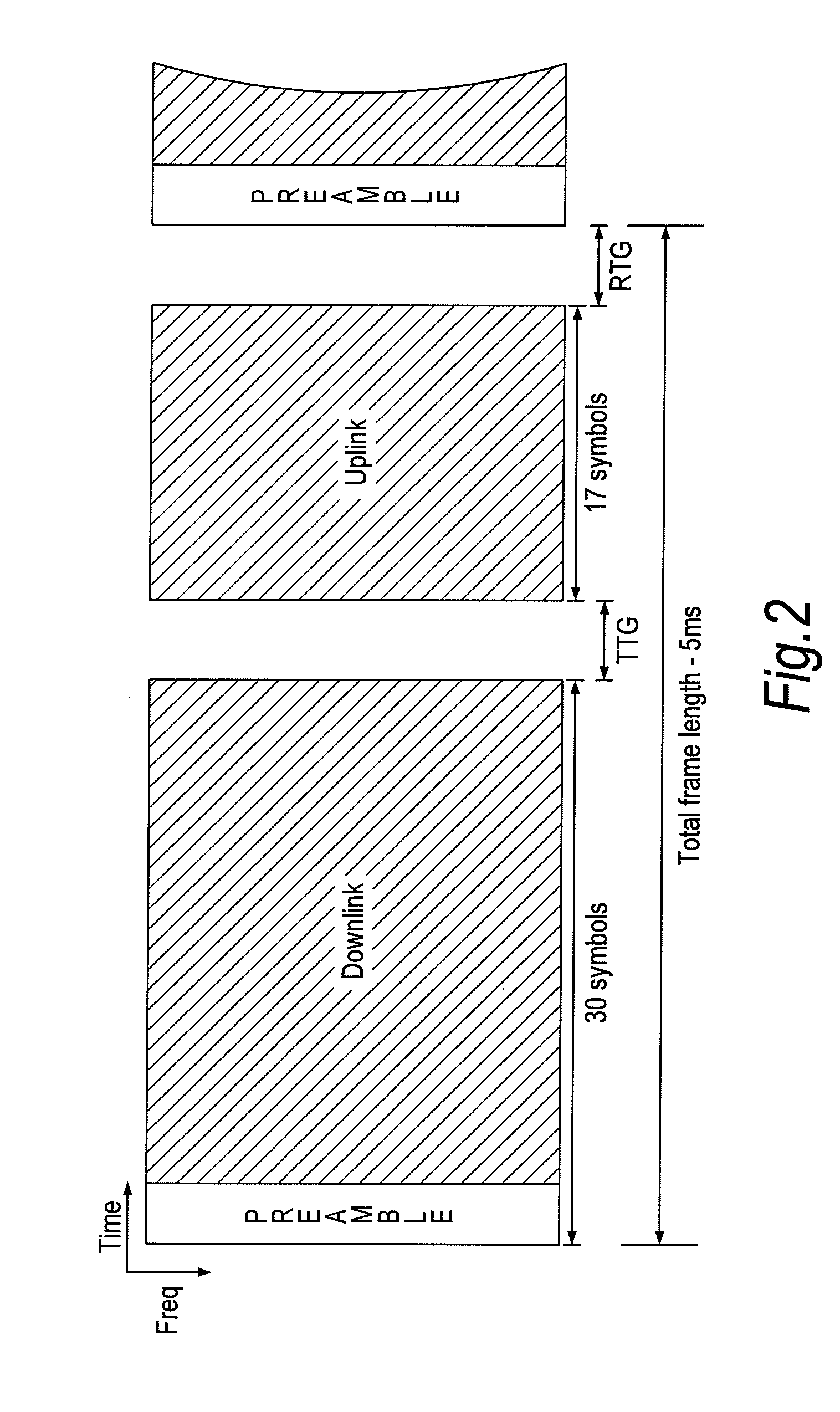Frame structure for a wireless communication system
a wireless communication system and frame structure technology, applied in the field of wireless communication systems, can solve the problems of affecting the performance and throughput of the ms, affecting the speed of the link adaptation, and affecting the speed of the link, so as to achieve the effect of improving the latency
- Summary
- Abstract
- Description
- Claims
- Application Information
AI Technical Summary
Benefits of technology
Problems solved by technology
Method used
Image
Examples
Embodiment Construction
[0057]This invention proposes a novel frame structure that has the capability of supporting a mix of IEEE 802.16e-2005 and IEEE 802.16m MSs without causing any degradation in performance for legacy MSs. The frame structure also has the capability of supporting a near seamless transition from a frame structure that almost replicates the existing legacy design to a structure that can significantly reduce latency. The reduction in latency will allow for support of users travelling at high velocities as link adaptation can be performed within a much tighter time frame compared to the existing 5 ms in the current legacy system.
[0058]As mentioned previously, the proposed frame structure is designed as to allow support for a mix of legacy IEEE 802.16e-2005 and IEEE 802.16m MSs, where the legacy MSs will see no-degradation in performance due to the change in frame structure. It is proposed that the frame structure be designed around the current limitations of the legacy frame (i.e, the prea...
PUM
 Login to View More
Login to View More Abstract
Description
Claims
Application Information
 Login to View More
Login to View More - R&D
- Intellectual Property
- Life Sciences
- Materials
- Tech Scout
- Unparalleled Data Quality
- Higher Quality Content
- 60% Fewer Hallucinations
Browse by: Latest US Patents, China's latest patents, Technical Efficacy Thesaurus, Application Domain, Technology Topic, Popular Technical Reports.
© 2025 PatSnap. All rights reserved.Legal|Privacy policy|Modern Slavery Act Transparency Statement|Sitemap|About US| Contact US: help@patsnap.com



